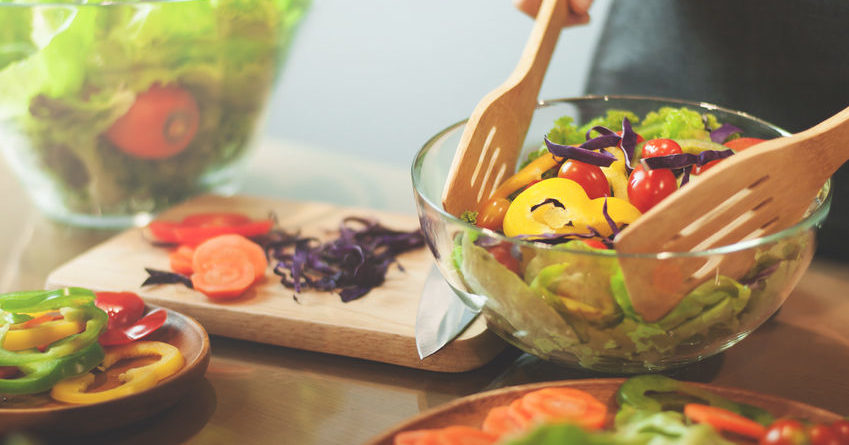Written By Julie Paiva, CHHC
On these really hot summer days, do you find yourself inside, bored and searching your kitchen for snacks? Often when we have nothing to do our minds can turn to wanting to eat. Perhaps this is a nighttime issue for you. Many people find themselves snacking after dinner even when they are not really hungry. We’ve all been guilty of eating mindlessly at one time or another, but for some of us, it can occur more frequently.
Scarfing down lunch while glued to a computer at work, shoveling in spoonfuls of food while watching TV, inhaling a meal while mesmerized by something on your phone, while answering emails or rushing to squeeze in your meal while driving to your destination. With our hectic lives, it’s so easy to gulp down our food without paying attention to it, which leads to overeating, perpetual hunger, and feeling less satisfied. Ultimately, this also leads to weight gain and an unhealthy lifestyle. When we are present during eating, taking our time, chewing our food we eat less and enjoy the experience more.
Here are some tips for making mindful eating practice:
Only eat when sitting at a table
No longer eat while standing, driving, or on the run. Your body will digest the food better and you will be more mindful and satisfied if you sit at a table to eat. This will take a little concentration and practice at first, but make it a rule, and stick to it.
Allow adequate time to eat
Don’t scarf down your meal in 5 minutes. No matter how busy your day is, schedule at least 30 minutes, and if you can 45 minutes to an hour for lunch. Take a break from work, allow your brain to recharge and chew your food.
Focus on eating.
Don’t sit at your computer, check your phone, read, or watch TV. Simply eat. If you’re working from a cafe, close your computer and flip your phone over until you are done eating. If you usually eat in your car or on your commute, get up earlier to have a peaceful meal.
Put the fork down between bites.
Chew each bite well, don’t shovel it in and swallow. Take a bite, put the utensils down, chew until the food is liquefied, swallow, then pick up the utensils for your second bite. Repeat. Taking the time to chew will help you digest your food better.
Eat with your less dominant hand.
If there are no chopsticks in site, simply swap your fork to your less dominant hand. If you usually keep your fork in your right hand, swap it to the left. Eating with a knife and fork – instead of just a fork, may also slow you down. This is fun, sometimes a little messy and can make you laugh.
Replace mindless snacks with a walk or timer.
Oftentimes we turn to food when we’re bored or overwhelmed and in need of a distraction, despite not being hungry. If you suspect this may be the case, instead of heading to the kitchen, take a quick walk to clear your head and get some sunshine. you may realize that simply a break and fresh air was all you needed. You can set a timer for 20 minutes and see if you feel hungry when it goes off.
Never eat out of the container.
No matter how tempting it may be, make it a rule to always put whatever you’re eating on a plate. When we eat out of the container, we are inclined to overeat, yet when we put a serving of it on a plate instead, we are more likely to be satisfied with just that. A trick I like to use if filling a small plate or bowl, your mind thinks that you are eating more than you actually are.
Make your eating formal.
Eating is an important part of our day, so be sure to make the ritual warm and welcoming. Eat off of nice plates. Make sure you have a comfortable table and chairs to eat at. Invest in nice tableware to brighten and beautify the experience, so that your kitchen table/dining room is an inviting place to be, and so that you’ll want to linger, instead of eat and run.




